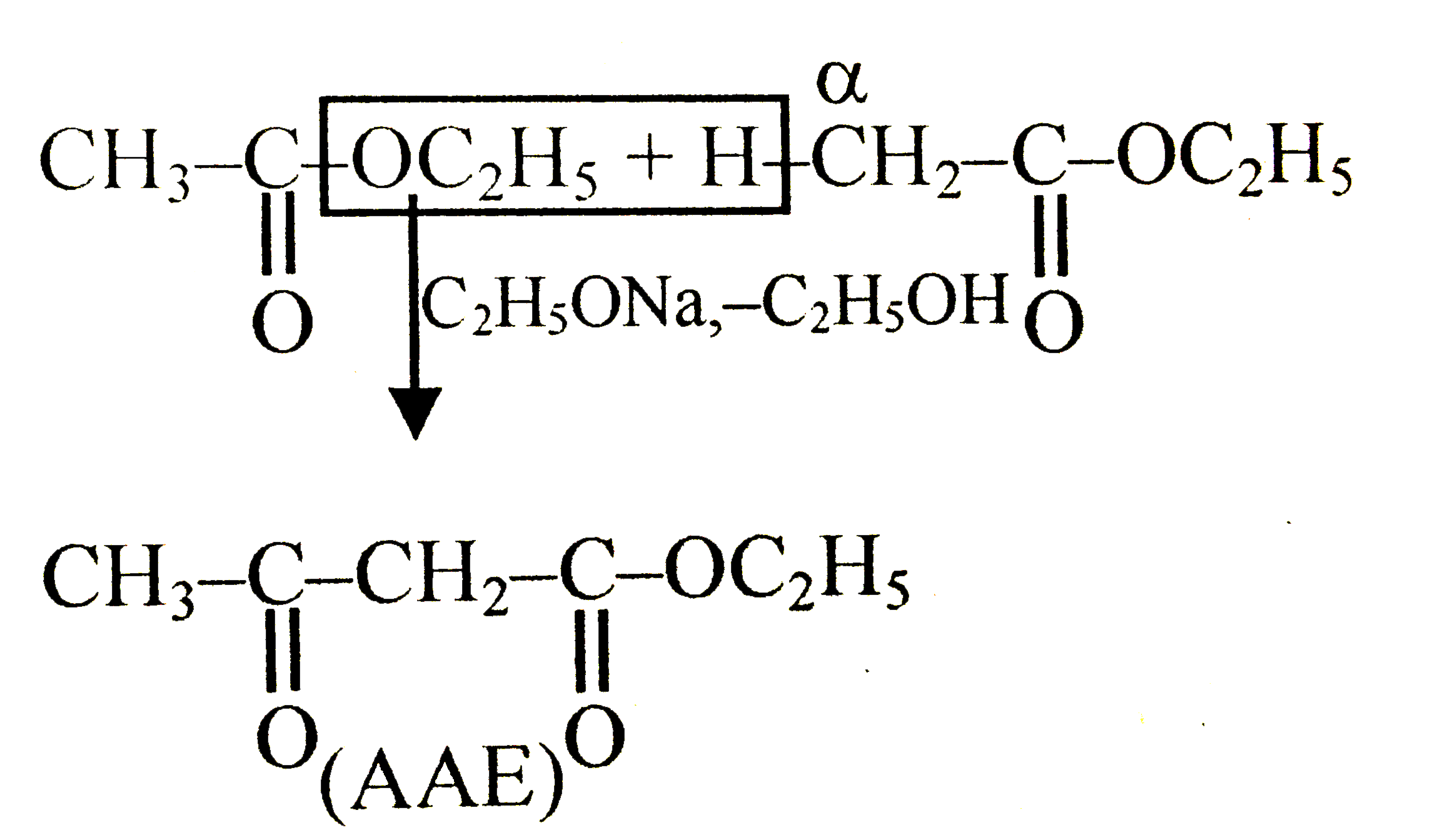Self condensation of two moles of ethyl acetate in the presence of sodium ethoxide yields
Ethyl butyrate
Acetoacetic ester
Methyl acetoacetate
Ethyl propionate
The correct Answer is:B
Similar Questions
Self-condensation of two moles of ethyl acetate in presence of sodium ethoxide yields
View SolutionThe rate constant for the hydrolyiss of ethyl acetate in the presence of 0.1N acid (A) was found to be 5.4×105s−1 and for the hydrolyiss of ethyl acetate in the presence of 0.1N acid (B) , it was 6.2×10−5s−1. form these observations, one may conclude that
View SolutionAssertion (A): Hydrolyiss of ethyl acetate in the presence of acid is a reaction of first order whereas in the presence of alkali, it is a reaction of second order.
Reason (R ): Acid acts as catalyst only whereas alkali act as one of the reactant.
View SolutionWrite the chemical eqution to show what happens when 'Ethyl acetate is treated with sodium ethoxide in ethanol and the reaction mixture is acidified'.
View SolutionEthyl chloride on reaction with chlorobenzene in presence of Sodium and ether gives:
View SolutionHow many moles of ethyl chloride should be reacted with sodium in the presence of dry ether in order to obtain 1.12 litres of butane at STP?
View SolutionThe condensation reacton between one equivalent of acetone and two equivalents of benzaldehyde in presence of dilute alkali leads to the formation of
View SolutionThe sodium salt of a carboxylic acid (A) was produced by passing a gas (B) into an aqueous solution of caustic alkali at an envolved temperature and pressure (A) on heating in the presence of sodium hydroxide followed by the treatment with sulphuric acid gave a dibasic acid (C). A sample of 0.4gm of acid (C) on combustion gave 0.08gm of water,.39gm of CO2 and weighting 1.0gm on ignition yielded 0.71gm of silver as residue. Identify (A),(B), and (C).
View SolutionTwo mole of an ester (A) are condensed in presence of sodium ethoxide to give a β−keto ester (B) and ethanol. On heating in an acidic solution (B) gives ethanol and β−keto acid (C). On decarboxylation (C) give 3-pentanone.
Identify (A),(B) and (C).
View SolutionWrite the balanced chemical equations for the following reactions and identify the type of reaction in each case.
(a) Nitrogen gas is treated with hydrogen gas in the presence of a catalyst at 773 K to form ammonia gas.
(b) Sodium hydroxide solution is treated with acetic acid to form sodium acetate and water.
(c) Ethanol is warmed with ethanoic acid to form ethyl acetate in the presence of concentrated H2SO4.
(d) Ethane is burnt in the presence of oxygen to form carbon dioxide, water and releases heat and light.
View Solution
